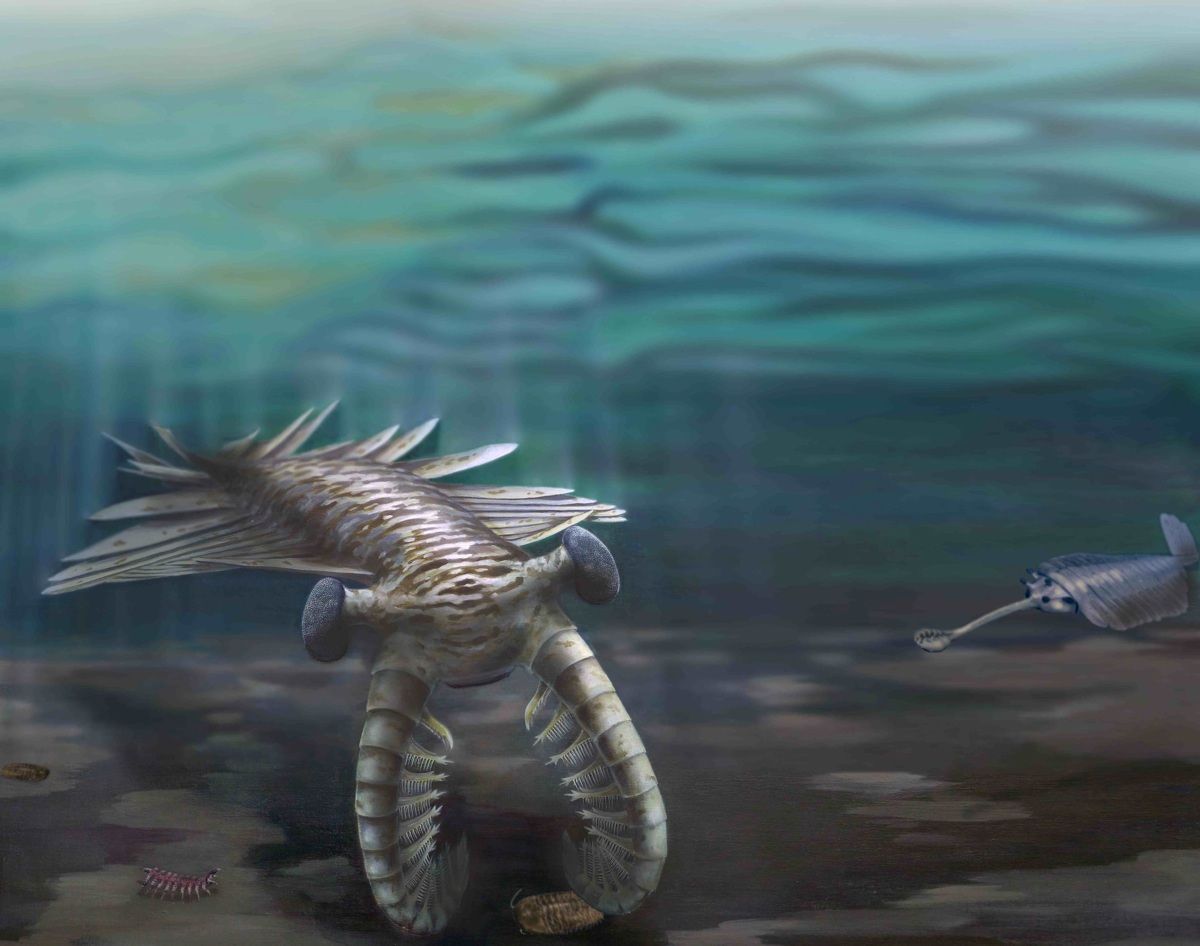
A crustacean with 3,000 lenses in its eyes, 6-foot-long shrimplike creatures and organisms that looked like tulips emerged hastily (from an evolutionary perspective) on the scene some 520 million to 540 million years ago. And now scientists have figured out just how quickly evolution was occurring during evolution's "big bang."
And it was fast by most measures, five times quicker than occurs today.
"The abrupt appearance of dozens of animal groups during this time is arguably the most important evolutionary event after the origin of life," lead author Michael Lee of the University of Adelaide and the South Australian Museum said in a statement.
The time period often referred to as the Cambrian explosion saw the sudden emergence of most of the planet's modern animal groups. Hard exoskeletons, jointed legs and compound eyes emerged during this time in organism. Animals also evolved some of the earliest biting jaws, as well as antennae, during the time period. [Cambrian Creatures: Images of Primitive Sea Life]
Researchers have long debated exactly how animals could have evolved so quickly during the period. Creationists have even used the Cambrian explosion to raise doubts about the theory of evolution, suggesting some divine hand must have played a role.
"However, because of the notorious imperfection of the ancient fossil record, no-one has been able to accurately measure rates of evolution during this critical interval, often called evolution's Big Bang," Lee said.
So the team tallied anatomic and genetic differences between living creatures and then used dates from the fossil record to estimate how fast evolution proceeded, or how quickly those changes came about.
Sign up for the Live Science daily newsletter now
Get the world’s most fascinating discoveries delivered straight to your inbox.
The team found that the emergence of many sea creatures during the Cambrian explosion could be explained by an accelerated — but not unrealistic — evolution by way of natural selection, or the process in which organisms change over time due to changes in heritable physical or behavioral traits. (For instance, changes that give an organism a leg up will help it survive to pass down that trait to offspring.) The team focused its study on animals related to arthropods, the group that includes crustaceans and other insects.
"In this study we've estimated that rates of both morphological and genetic evolution during the Cambrian explosion were five times faster than today – quite rapid, but perfectly consistent with Darwin's theory of evolution," Lee said.
Follow Tia Ghose on Twitter and Google+. Follow Live Science @livescience, Facebook & Google+. Original article on Live Science.

Tia is the managing editor and was previously a senior writer for Live Science. Her work has appeared in Scientific American, Wired.com and other outlets. She holds a master's degree in bioengineering from the University of Washington, a graduate certificate in science writing from UC Santa Cruz and a bachelor's degree in mechanical engineering from the University of Texas at Austin. Tia was part of a team at the Milwaukee Journal Sentinel that published the Empty Cradles series on preterm births, which won multiple awards, including the 2012 Casey Medal for Meritorious Journalism.